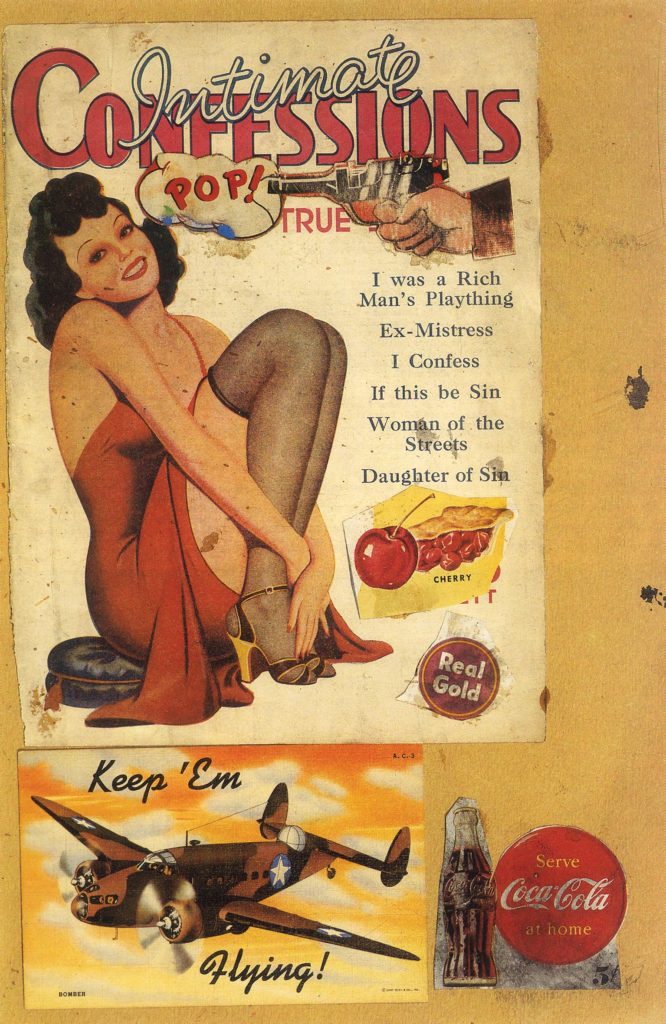Masterpiece Story: Portrait of Madeleine by Marie-Guillemine Benoist
What is the message behind Marie-Guillemine Benoist’s Portrait of Madeleine? The history and tradition behind this 1800 painting might explain...
Jimena Escoto 16 February 2025
29 December 2023 min Read
Eduardo Paolozzi’s 1947 collage I was a Rich Man’s Plaything, which can be seen in the Tate Modern in London, was one of the first works of Pop Art and even contains the word “POP!”
Eduardo Paolozzi was born in 1924 in Leith, a port north of Edinburgh, Scotland. His parents were Italian immigrants, hence his name. In June 1940, he was interned for three months after Italy declared war on the UK. After his release, Paolozzi studied at Edinburgh College of Art and later lived in Paris and London, where he established his studio.

Like the later works of Andy Warhol, I Was a Rich Man’s Plaything shows a fascination with contemporary American culture and consumerism, epitomized by the Coca-Cola advert in the bottom right corner. The cartoonish font of the “POP!’ may well have inspired Roy Lichtenstein, whose paintings often took the form of cartoons.
From a 2019 perspective, the collage could be seen as problematic and sexist: The sexualized woman – presented as the object of male desire, wearing a revealing red dress – is shown smiling obliviously as a gun is fired (presumably by a man) at her head. Although the playful ‘POP!’ suggests that the gun is only a toy, the allusion to femicide is troubling, because women continue to this day to be objectified, abused, and even murdered by men.

References to the woman’s wantonness – she is described as a “Woman of the Streets”, and “Daughter of Sin” – point to an alternate interpretation. Perhaps the cherry represents the woman’s virginity, which was “popped” by the titular rich man, who made her his plaything until he grew tired of her. In this reading, the gun is a phallic signifier, while the title takes on a tragic meaning; she is his “Ex-Mistress”.
Male virility is represented by the military plane in the bottom left corner. Could the declaration “Keep ’em flying!” also have an erotic connotation, in this context?
I Was a Rich Man’s Plaything is one of ten collages in Paolozzi’s series “BUNK” (1947 – 52), which were mainly made from magazines given to Paolozzi by American ex-servicemen. In many ways, it is a celebration of the pleasures of American culture and a way of life that was threatened by fascist totalitarianism during World War II.
No matter what we think of it today, I Was a Rich Man’s Plaything has an important place in the history of modern art, paving the way as it did for the postmodern experimentation of American artists such as Warhol and Lichtenstein.
Despite his enormous success – he was knighted in 1989 – Paolozzi never forgot his humble beginnings in Leith. In 1994, he donated a large body of his work to the Scottish National Gallery of Modern Art, and a reconstruction of his studio can still be viewed there today. Paolozzi was also known for his sculptural work, and three of his statues – of a foot, an ankle, and a hand, respectively – stand outside St Mary’s Cathedral at the top of Leith Walk, Edinburgh.
Eduardo Paolozzi died in 2005 in London, at the age of 81.
DailyArt Magazine needs your support. Every contribution, however big or small, is very valuable for our future. Thanks to it, we will be able to sustain and grow the Magazine. Thank you for your help!